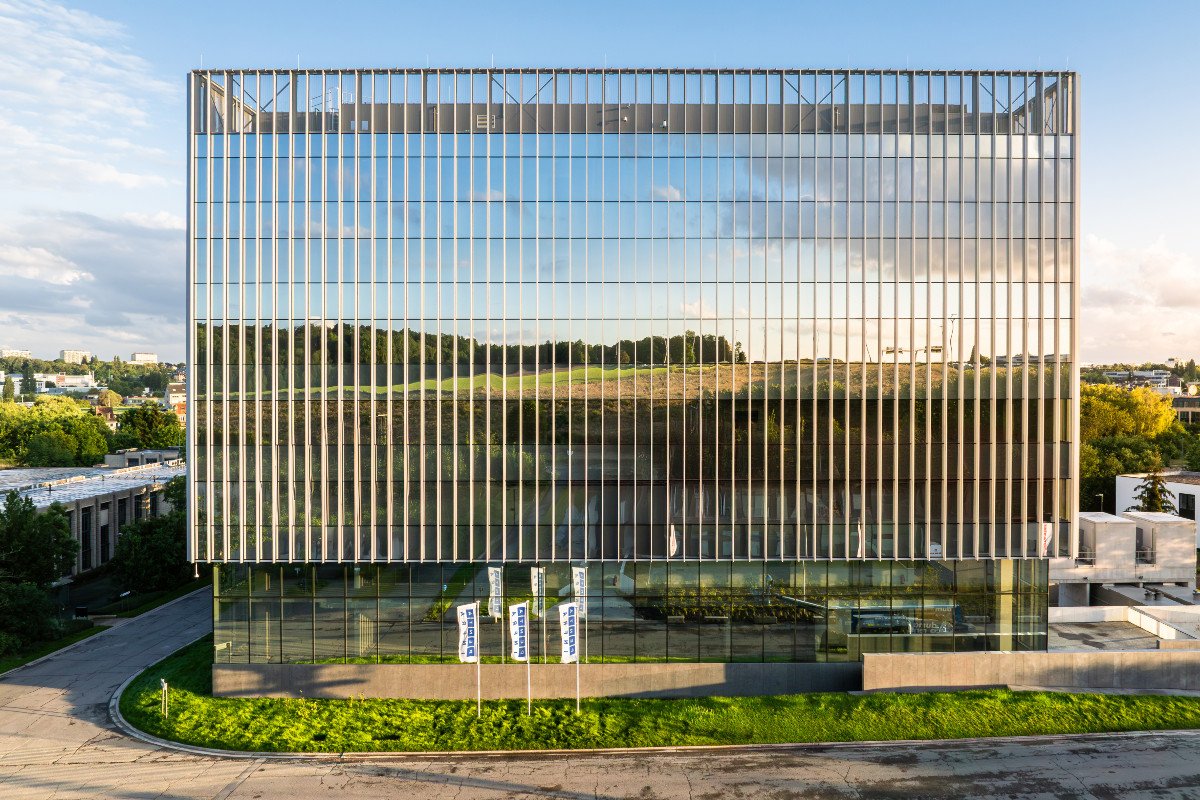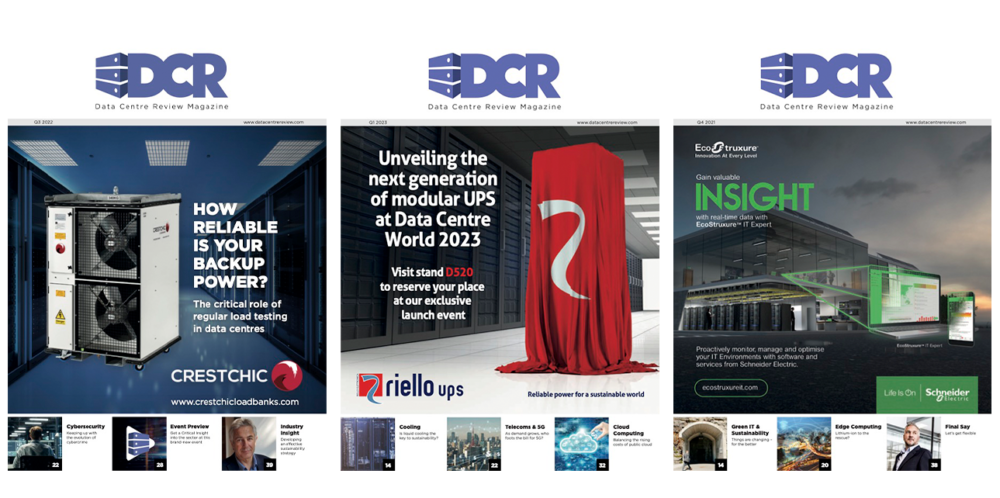This interview was supplied by Penta Infra and has been lightly edited for length and clarity.
Penta Infra’s new BRU01 in Brussels is a 7.2 MW, carbon-neutral data centre designed around a resource-sharing architecture. The project won Data Centre of the Year at the 2025 DCR Awards and Best Data Centre Sustainability Project at the 2025 Datacloud Awards.
To set out clearly what makes it different, and how the same principles might inform future data centre and campus builds, Penta Infra CEO Bob Sprengers and Dieter Roefs, data centre expert at real estate developer Ghelamco, outline the project’s key sustainability features, the benefits these create for customers and neighbouring organisations, and the practicality of scaling such measures across the wider industry.
Dieter, back to the beginning: how did the development come about?
Penta Infra BRU01 was the first building in a major redevelopment by Ghelamco of a business park that belongs to Brussels University. It’s called the Green Energy Park, it is in Zellik, northwest Brussels. The park was designed to be a critical part of the Belgian R&D landscape through the collaboration of the developers with anchor tenants including the University and the Universitair Ziekenhuis Brussels (Brussels University Hospital). The data centre also hosts the VSC Flemish Supercomputer, the most powerful high-performance computing infrastructure in the country.
From the start there was a vision of a sustainable campus where resources could be shared. We brought academic research in medicine, life sciences and technology together with digital businesses, reinventing the business park architecture along sustainable lines and equipping it for tomorrow’s digital economy.
Bob, what would you say makes the data centre so sustainable?
Well, I can outline what you might call the mainstream sustainable and performance features.
Penta Infra BRU01 is carbon and water-neutral. It is a low impact build, with all key components – mainly aluminium and glass – reclaimable and reusable. It provides customers with 7.2 MW of IT load, based on a 12.5 MVA power feed all of which is directly traceable to local renewables, and it has a photovoltaic southern facade which can generate up to 390 kW.
The data centre has a design PUE of less than 1.2 with a modular architecture to right-size power overhead. It is designed for 100% free cooling using high water temperatures. No piped water is used. Rainwater is recovered and stored below the data centre. In warmer weather there is adiabatic assistance (dry cooling) and compressor use is 100% offset by the photovoltaics.
The other thing that marks our Brussels data centre out as different is its high level of third-party certification. It is ‘triple-certified’, with a BREEAM ‘Excellent’ rating for circular and sustainable building practices, EDGE Advanced status, and Uptime Institute Tier III certification for Design and Operational Sustainability.
How about the relationship between the data centre and the rest of the business park? Dieter, how does it differ from other campuses?
Where it is unique is in its vision of resource sharing via the Green Business Park. The park shares rainwater, it shares energy from the sun, and also shares the heat and power from the data centre through a smart grid. Like an ecosystem in nature, nothing operates in isolation, making everything more energy efficient.
The data centre has heat exchange capabilities in a thermal smart grid which will be used to heat neighbouring buildings. We also incorporated a smart microgrid to ensure an energy-sharing community was practical. We worked with Fluvius (the Flemish Distribution System Operator) to build an on-site substation. The data centre gensets, fuelled by low-carbon HVO (renewable Hydro-treated Vegetable Oil) with 2 MW excess capacity, can be used to stabilise or inject power into the local grid. If needed, in ‘Island Mode’ there is sufficient local power to support the whole business park.
The benefits will grow as the park grows. As new buildings are added, rainwater will be recovered from them and stored in a basin in the data centre sub-basement. As new buildings go up, they will also feature photovoltaic facades that can power them as well as providing excess to the data centre when it is needed.
Work has started on the second building, a laboratory. This will be followed by a high-rise office block designed to cater for academic research and blue chips. With the infrastructure developed for Penta Infra BRU01, the park buildings can interact with each other to generate and conserve resources.
Could this be a model for future developments?
Definitely! In fact I would really encourage data centre developers to come and take a look when they are at the planning stage.
We hope that the Green Business Park model will be looked back on as the beginning of a new wave of what EU guidelines refer to as ‘Citizen’s Energy Communities’ (CECs). A CEC allows for peer-to-peer multi-vector energy trading of electricity and heat. Other companies, buildings, assets big or small, on and off-campus could be involved. For example, the data centre could become the direct destination for all surplus solar energy generated on the campus while all future developments on the campus could become recipients of heat from BRU01. I think we will see many data centre operated CECs in the next few years.
Bob, you must be very pleased to be operating one of Europe’s most sustainable data centres. What are the benefits you think Penta Infra’s BRU01 facility brings for your customers and other stakeholders?
I think Penta Infra BRU01 shows that with advanced planning and careful collaboration we can build facilities that shine both in terms of their data processing capability and their environmental and community usefulness. This is where the industry needs to be.
Take AI and HPC. BRU01 will host the VSC Flemish Supercomputer, the most powerful high performance computing infrastructure in the country. This is a world-leading array that will support innovation and new breakthroughs for government, industry, and researchers. The same flexibility that enables the VSC is also very attractive to other AI-focused customers. BRU01 offers a huge range of power densities with both air and liquid cooling, so it can power High-Performance Computing and AI, as well as traditional colocation configurations.
On the energy side, Penta Infra BRU01 could be a blueprint for the future, and it couldn’t be better timed. Data centre sustainability is often defined purely in terms of efficiency and the deployment of low-carbon power. By creating a blueprint for community resource sharing, this development expands the definition to include social and governance principles as well as the environment. BRU01 and the Green Business Park demonstrate that collaborative planning which benefits society can accelerate both digitisation and the energy transition.


